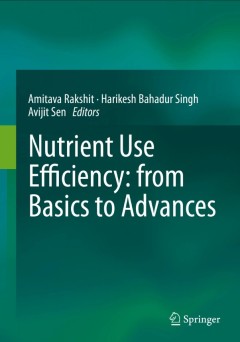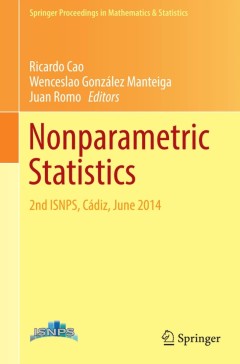Filter by

Reshaping Social Life
ABSTRACT Caught up in current social changes, we do not fully understand the reshaping of social life. In sociological analyses there is a conceptual gap between subjectivities and social structural processes, and we face real difficulties in understanding social change and diversity. Through analysis of key areas of social life, here, Sarah Irwin develops a new and exciting resource for bette…
- Edition
- -
- ISBN/ISSN
- 9780203448953
- Collation
- -
- Series Title
- -
- Call Number
- -

On the Effect of Offshore Wind Farms on the Atmosphere and Ocean Dynamics
Renewable energy resources now play an essential role in the energy supply debate, and especially a new interest in wind energy has resulted in the intensified construction of wind farms. Thanks to the growing demand for renewable energy, offshore wind farms (OWFs) are increasingly gaining in popularity, since yields over sea are greater and more reliable than over land. Against this background…
- Edition
- 1
- ISBN/ISSN
- 978-3-319-08640-8
- Collation
- XVIII, 162
- Series Title
- Hamburg Studies on Maritime Affairs
- Call Number
- -

Men In The Public Eye
Men in the Public Eye reveals why men's domination in and of the public sphere is a vital feature of gender relations in patriarchy. It also shows how public domains dominate private domains, contributing to the intensification of public patriarchies. Jeff Hearn explores these important issues by focusing on the period 1870-1920, when there was massive growth and transformation in the power of …
- Edition
- -
- ISBN/ISSN
- 9780203134481
- Collation
- -
- Series Title
- -
- Call Number
- -

The Transformation of Welfare States?
This accessible work provides a ‘political sociology’ of welfare states in industrial societies, with both historical and contemporary perspectives. Ellison focuses on the social and political underpinnings of a number of welfare regimes and looks at the transformations they have undergone and the challenges they face. This book assesses current debates about the role of ‘globalization…
- Edition
- -
- ISBN/ISSN
- 9780203099490
- Collation
- -
- Series Title
- -
- Call Number
- -

Playing on the Periphery Sport, Identity and Memory
Part of the Sport in the Global Society series, this innovative and creative text explores collective history, memory, and sport culture, tracking the passage of sports away from England. The author investigates why ‘elite’ English sports – such as rugby and cricket – became national sports in New Zealand and Australia, and asks why ‘working class’ English sports – such as footbal…
- Edition
- -
- ISBN/ISSN
- 9780203099100
- Collation
- -
- Series Title
- -
- Call Number
- -

Nutritional Supplements in Sports and Exercise
This new text presents the most up-to-date research based information regarding popular sport/performance nutrient dense diets and nutritional supplements and their constituents that directly or indirectly utilize them. Previous chapters have been fully revised and new chapters have been added to cover important cutting edge topics. New chapters include: (1) Carbohydrate Utilization and Disposa…
- Edition
- 2
- ISBN/ISSN
- 978-3-319-18229-2
- Collation
- XXVIII, 385
- Series Title
- -
- Call Number
- -

Nutrient Use Efficiency: from Basics to Advances
This book addresses in detail multifaceted approaches to boosting nutrient use efficiency (NUE) that are modified by plant interactions with environmental variables and combine physiological, microbial, biotechnological and agronomic aspects. Conveying an in-depth understanding of the topic will spark the development of new cultivars and strains to induce NUE, coupled with best management pract…
- Edition
- 1
- ISBN/ISSN
- 978-81-322-2168-5
- Collation
- XXIII, 417
- Series Title
- -
- Call Number
- -

Images of Italian Mathematics in France: The Latin Sisters, from Risorgimento…
The contributions in this proceedings volume offer a new perspective on the mathematical ties between France and Italy, and reveal how mathematical developments in these two countries affected one another. The focus is above all on the Peninsula’s influence on French mathematicians, counterbalancing the historically predominant perception that French mathematics was a model for Italian mathem…
- Edition
- -
- ISBN/ISSN
- 978-3-319-40080-8
- Collation
- V, 316
- Series Title
- -
- Call Number
- 510 IMA

Nonparametric Statistics
This volume collects selected, peer-reviewed contributions from the 2nd Conference of the International Society for Nonparametric Statistics (ISNPS), held in Cádiz (Spain) between June 11–16 2014, and sponsored by the American Statistical Association, the Institute of Mathematical Statistics, the Bernoulli Society for Mathematical Statistics and Probability, the Journal of Nonparametric Stat…
- Edition
- 1
- ISBN/ISSN
- 978-3-319-41581-9
- Collation
- XI, 224
- Series Title
- Springer Proceedings in Mathematics & Statistics
- Call Number
- -

Nonlinear Principal Component Analysis and Its Applications
This book expounds the principle and related applications of nonlinear principal component analysis (PCA), which is useful method to analyze mixed measurement levels data. In the part dealing with the principle, after a brief introduction of ordinary PCA, a PCA for categorical data (nominal and ordinal) is introduced as nonlinear PCA, in which an optimal scaling technique is used to quantify …
- Edition
- 1
- ISBN/ISSN
- 978-981-10-0157-4
- Collation
- X, 80
- Series Title
- SpringerBriefs in Statistics
- Call Number
- -
 Computer Science, Information & General Works
Computer Science, Information & General Works  Philosophy & Psychology
Philosophy & Psychology  Religion
Religion  Social Sciences
Social Sciences  Language
Language  Pure Science
Pure Science  Applied Sciences
Applied Sciences  Art & Recreation
Art & Recreation  Literature
Literature  History & Geography
History & Geography